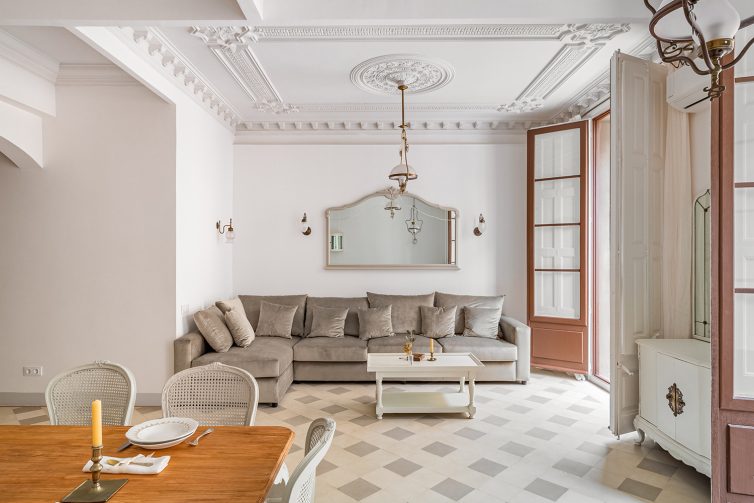Coving is that perfect finishing touch to any room, adding an element of high class and traditional style.
In fact, it’s not often that you will find a room in a home without coving. If you’re unfamiliar with the term Coving in the world of home decor and renovations, Coving is the decorative join between a wall and ceiling, where the two meet.
Coving is highly popular and is found in the majority of homes, both new and old. It is usually made to match the colour and material of the skirting boards within the room, to continue a consistent style. We’ll be digging into the specifics of coving, and why exactly it’s needed within the home.
What is Coving?
Coving is sometimes known as ceiling moulding. It is typically made of either timber, plaster, paper-covered plaster, expanded polystyrene or polyurethane. It sits at a high point of the surface, at the join between the end of the wall and the start of the ceiling.
Both modern and more traditional properties will more than likely have some sort of coving in each room. Though finishes and materials may vary depending on the style of the home, age of the building, and budget. C-shaped or geometric coving is more likely found in more modern properties, whereas older homes have a huge variety of patterns, textures and styles dependent on the style of the era. For example, Victorian coving often displays patterns such as fleur-de-lys, whereas Georgian coving displays ‘egg and dart’, acanthus or dentil patterned coving.
Why Do You Need Coving?
There are various reasons to invest and add coving to the decor within your home. The most common reasons for installing coving are:
Cover the Weakest Section of Wall
The area coving is applied to is usually the weakest part of the wall, due to it being the join between the end of the wall and the start of the ceiling. This does not mean that this part of the wall is weak, it refers to the plaster. Plaster can have a harder time staying smooth and put when covering a joint, which quite often can result in hairline cracks around the area.
Coving is a great way to ensure any small cracks and visible flaws are covered in a stylish and decorative manner.
Add Value to Your Property
Coving is highly sought after, especially in older properties. Including coving in your home decor plan can really add that finishing touch to your layout, boosting the home’s property value.
Older homes with decorative features such as the Victorian fleur-de-lys coving are often on the market for a slightly higher price. This is due to the original coving features becoming a rarity in today’s modern homes.
The price of installing coving is quite often worth the extra cost in the long run.
Add That Finishing Touch
Without coving, walls can look bare and like something’s missing. Like skirting boards, coving adds that extra touch to any room. Timber coving can be left bare, giving a softer, but more rustic feel within the home, or can be given a pop of colour with a coat of paint or two,
Feeling daring? Match up your skirting boards and coving with a fun, feature accent colour, which can be contrasted or co-ordinated with the rest of your decor.
Match the Aesthetic of Your Home
There are so many different materials and styles of coving, there’s almost an endless list to choose from. The material used and textures and patterns created can really determine and be incorporated with the aesthetic of your home.
If you’re looking for a more traditional, timeless, and high class feel, think Victorian or Georgian patterns and textures, with a lick of paint – whether it be white, or dark hues such as emerald green.
If you’re opting for that more modern, millennial aesthetic, go for simple, rustic plain timber coving. Or match the coving with your white walls for that clean, tidy vibe.
